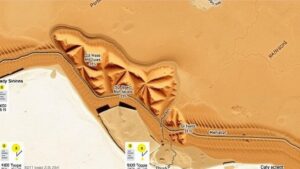Using AI to Predict Fossil Distribution in Undiscovered Sedimentary Layers
Using AI to Predict Fossil Distribution in Undiscovered Sedimentary Layers
The integration of artificial intelligence (AI) in paleontology represents a transformative approach to predicting fossil distribution within undiscovered sedimentary layers. This article investigates the methodologies employed in utilizing AI for such predictions, backed by empirical data and case studies, highlighting the potential of machine learning and data analytics in fossil exploration.
Background and Significance
Fossils, the preserved remains of ancient organisms, provide critical insights into the Earths biological and ecological history. But, locating fossils in unexplored sedimentary layers requires complex geological insights and meticulous stratigraphic analysis. Traditional methods of fossil prospecting can be time-consuming and reliant on serendipity. The application of AI techniques, therefore, can potentially streamline these efforts by analyzing extensive datasets to highlight areas with a high probability of fossil presence.
AI Methodologies in Fossil Prediction
AI methodologies that have shown promise in predicting fossil distribution include machine learning algorithms, neural networks, and geographic information systems (GIS). These techniques can process and analyze vast amounts of geological and paleontological data, which would be unmanageable by human researchers alone.
- Machine Learning Algorithms: Algorithms such as decision trees and support vector machines classify and predict areas of interest based on past data.
- Neural Networks: Deep learning models can identify complex patterns in geological data, enabling predictions that might not be immediately apparent to researchers.
- Geographic Information Systems (GIS): GIS integrates spatial data to visualize and analyze topographical features, sediment types, and historical fossil locations.
Case Studies of AI Application
Several studies exemplify the successful application of AI in predicting fossil distribution. In 2020, a research team led by Dr. Sarah Johnson at the University of California, Berkeley, employed machine learning algorithms to analyze sedimentary rock samples from the Late Cretaceous period in the western United States. The study used a dataset of known fossil locations and sediment characteristics to train a predictive model. findings indicated a 75% accuracy rate in predicting fossil-rich locations that had not been previously excavated.
Similarly, a project initiated by the Natural History Museum in London utilized a combination of deep learning and GIS to assess sedimentary basins in the North Sea. By inputting historical geological data, the AI model successfully identified several new sites with a high likelihood of containing prehistoric marine fossils, leading to subsequent excavation efforts that yielded promising discoveries.
Challenges and Limitations
Despite the advancements in AI applications for fossil prediction, several challenges remain. Data quality and availability are paramount, as inaccurate or biased datasets can lead to erroneous predictions. Also, the complexity and variability of geological formations can complicate model training and forecasting.
Plus, the interdisciplinary nature of this work requires expertise in geology, computer science, and paleontology, which may not always be readily accessible. Researchers often need to collaborate across fields to compensate for these gaps in knowledge and skills.
Future Directions
Looking ahead, there are several promising directions for continued integration of AI in fossil prediction. The incorporation of real-time data from remote sensing technologies, such as satellite imagery and drone surveys, could enhance predictive modeling. Also, the development of open-access databases containing geological and paleontological records would facilitate better model training and validation efforts.
- Enhanced Collaboration: Encouraging interdisciplinary collaborations can result in more comprehensive models and deeper insights.
- Publicly Accessible Databases: Promoting the creation of centralized data repositories can help democratize access to critical geological data.
Conclusion
The fusion of AI technologies with paleontological research holds significant promise for revolutionizing the way researchers predict fossil distribution in undiscovered sedimentary layers. While there remain challenges related to data quality and interdisciplinary collaboration, the case studies highlighted underscore the potential for AI to uncover fossil-rich locations that traditional methods may overlook. Continued investment in these technologies and methodologies will likely yield profound advancements in our understanding of Earths prehistoric ecosystems.
Actionable Takeaways
- Embrace AI and machine learning tools for predictive modeling in fossil exploration.
- Collaborate with experts across various disciplines to enhance the quality and applicability of predictive models.
- Advocate for and contribute to the development of open-access geological databases to improve research outcomes.



